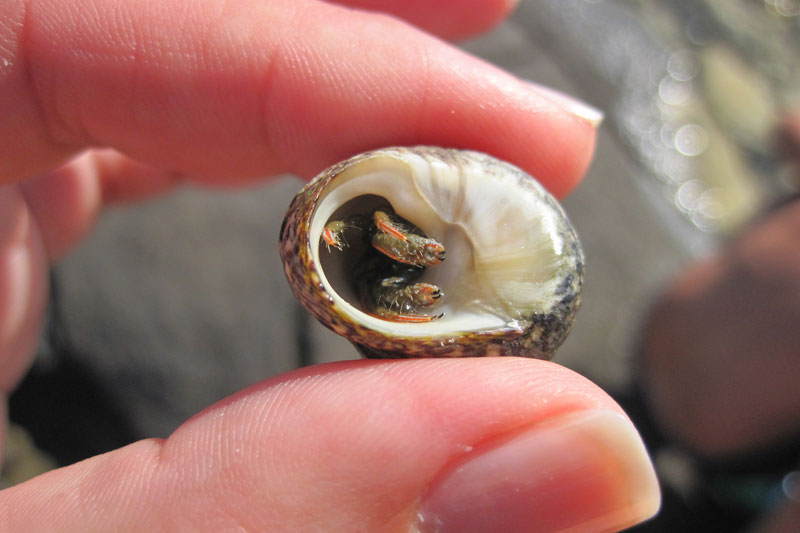Molting is very important and your hermit crabs can be very sensitive while they undergo molting. According to statistics, in the wild most of hermit crabs deaths are related to unsuccessful molting. And in captivity, it can get a lot worse since most hermit crab owners can’t tell if their hermit crabs are molting or dead and hence they get rid of them.
We will be discussing in this article how you can tell the difference if your hermit crab is dead or molting or both. So you can assess the situation properly and not make any mistakes of getting rid of your molting hermit crab.
Molting
Molting is a process where a hermit crab sheds its old exoskeleton and it will start growing a new one. Your hermit crab will be highly sensitive and vulnerable to harm during this period. Either by you or by other hermit crabs which are why it’s important to leave it alone or isolate it from other hermit crabs.
Hermit crabs usually burrow themselves in the sand for protection from harm and stress when they are molting. It can also be difficult to tell as they are very inactive during this period, though they still make little movements which can give you a sign that they are still alive.
While in the initial process of molting, the hermit crab’s pincer becomes semi-paralyzed since it is preparing to pull out its old exoskeleton. In addition, your hermit crab will lose its balance when shedding its old exoskeleton and it will also lose mobility since it will be losing some of its parts. First-time hermit crab owners should note this since they will probably misunderstand this situation as their hermit crab is dead.
You can tell by their Molting positions
Your molting hermit crab will mostly lie on its side with its cloudy and dull eyes. While laying on in this position, you will notice easily that most of their body is out of their shell. Additionally, your hermit crab’s antenna will be tucked down on a downward position under their eyestalks.
Furthermore, their legs will be slightly curled and look paralyzed as if it’s “dead”. If you notice this, don’t panic and observe closely that they will move slightly. It is important that you should observe their gills as well since they are still going to breathe while undergoing the molting process.
And once your hermit crab was finally rid off of its old exoskeleton, it will excrete a brown/orange substance. This is an indication that hermit crabs were able to remove its old exoskeleton.
Another position of molting that you should be aware of is called “hunched” where instead of lying on its back straight, your hermit crab will lay down on an upright position inside its shell. There will still be minimal movement of breathing in this position and will appear as if its “dead”.
To conclude as well, crab positions are just one of the indications you can use if your crab is molting or actually dead. But it’s always safe to assume they are molting instead of taking your chances of getting rid of it when in fact it’s not really dead. But hopefully, these things help.
Foul smell can be an indicator
This is maybe the easiest way to tell if your hermit crab is indeed dead. A decomposing hermit crab releases a foul smell once it decomposes. It’s easy to tell the difference between the smell of spoiled food and decomposing hermit crab.
If your hermit crab is dead, you will notice a distinct smell of rotten fishy and salty smell around your tank. Your hermit crab will eat less during the molting period so if you leave out food on its tank it and it spoiled its fairly easy to tell the difference in smell.
Color is key as well
This is also a good indicator if it’s alive or not. One good example is a healthy and alive Caribbean hermit crab, they are usually red or orange in color while a healthy Ecuadorian hermit crab is usually bluish-gray or green.
If it’s molting, a white exoskeleton is highly noticeable but if you see otherwise then chances are it could be dead. Usually, a dead hermit crab is gray in color but still, do rely on the other indicators as well to assess the situation.
Lastly, movements
The shaking method would be your last resort to tell if your hermit crab is molting or dead. Your molting hermit crab is stuck into its shell while a dead hermit crab will be rigid and loose. A dead hermit crab will fall out easily from its shell if dead while your molting hermit crab won’t. Do note that this is a last resort! You don’t do this out of panic! Rely on the other factors such as smell to indicate if your hermit crab is dead or not.
